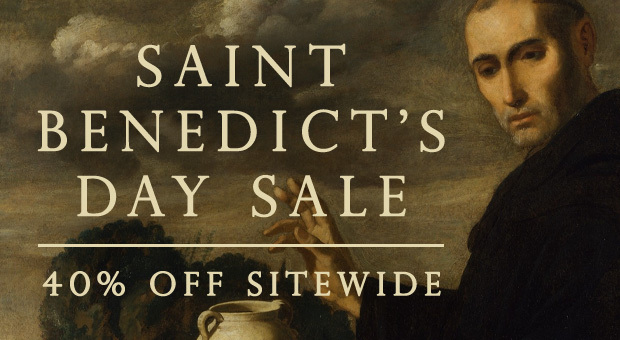During the Year of Faith (2012), Pope Benedict XVI continuously encouraged Catholics to rediscover the riches of the teachings of the Second Vatican Council as a means to strengthen their faith and love for the Church. Through a thorough discussion of key themes, major documents, and historical context, this course will deepen your understanding as you open yourself up to the development of the Church’s wisdom.
An Introduction to Vatican II begins by focusing on the reasons which gave rise to Vatican II. Dr. Jem Sullivan examines the common misconceptions regarding the council, explores its general principles and themes, and finally considers the key documents which emerged from the council. Dr. Sullivan proposes and faithfully considers such probing questions as...
-
- Why study Vatican II?
- What is the relationship between the Church and the Modern world?
- How can the Church defend the deposit of faith given the rise of science and the loss of religiosity?
- What is the essence of the Sacred Liturgy and how can it be most faithfully preserved?
- Are the ministers of the Church in need of reform?
- Or is the Church itself simply "outdated"?
The Church's decision to form a council begins with Christ's commission to "preach the Gospel to all nations." The Magisterium is therefore given the task of teacher, and the responsibility of authentically interpreting the Word of God. Every Church council, including Vatican II, is first and foremost an ecclesial event that uniquely expresses, at a given moment in history, the divinely entrusted authority of the Magisterium and the communion of faith expressed in Church’s teaching office. If the Church is commissioned to teach, we as the Body of Christ must listen and continue to pass on the deposit of faith.
Over the past forty years, the documents of the Second Vatican Council have shaped, guided, and influenced almost every dimension of the Church’s pastoral ministry in Catholic education, social ministries, catechesis, and evangelization. The branches and arms of the Catholic Church, while various and many, must continuously drink from their source, who is Christ. The Church is first and foremost a mystery whose origin is in the life, death and resurrection of Christ, the light of the nations. Participating in a special way in the Paschal mystery, the Church also serves as a “light to the nations,” bringing the message of Christ’s salvific life, death and resurrection to the world. The council did not change this most constitutive element––it rather brought clarity to its pastoral application, or as St. John Paul II once said, the council is to be as a whole "a sure compass by which to take our bearings in the century now beginning” (Pope John II, Novo Millennio Ineunte, 57).
- Why Study Vatican II?
Following both Blessed John Paul II and Pope Benedict XVI’S call for a renewed and deeper study of Vatican II, Catholics are invited to read the documents of the Council and to examine their importance in the life of the Church. - Principals & Misconceptions
In light of certain misunderstandings surrounding the Second Vatican Council, Catholics can be guided by three interpretive principles to the truth of the Council’s teachings. - Genuine Church Renewal
Cardinal Avery Dulles outlines eight guiding principles to distinguish true from false Church reform. - The Council: Why It Was Formed
The facts surrounding the Second Vatican Council, particularly the reasons it was convened, provide solid groundwork for understanding the Council’s work and significance. - Sacrosanctum Concilium: The Sacred Liturgy
An examination of the central themes of Sacrosanctum Concilium, Vatican II’s momentous and often debated document on sacred liturgy, illuminates the authentic teachings of the Second Vatican Council. - Dei Verbum: Divine Revelation
Dei Verbum, one of the most substantial documents of Vatican II, presents an in-depth examination of the nature and manifestation of Divine Revelation in salvation history and in the living tradition of the Church. - Lumen Gentium: The Church as Light to the Nations
Lumen Gentium, the Second Vatican Council’s dogmatic constitution on the Catholic Church, offers an ecclesiastical self-reflection on the role of the Church as a “light to the nations” and conveyer of Divine Revelation. - Gaudium et Spes: The Church in the Modern World
The Pastoral Constitution of Vatican II, Gaudium et Spes, focuses on the “joy and hope” which the Church—as entrusted by Christ—can bring to today’s troubled world.
- Author:
- Jem Sullivan, PhD
- Publication Date:
- 2022
- Product Format:
- Digital
- Imprint:
- TAN Courses














